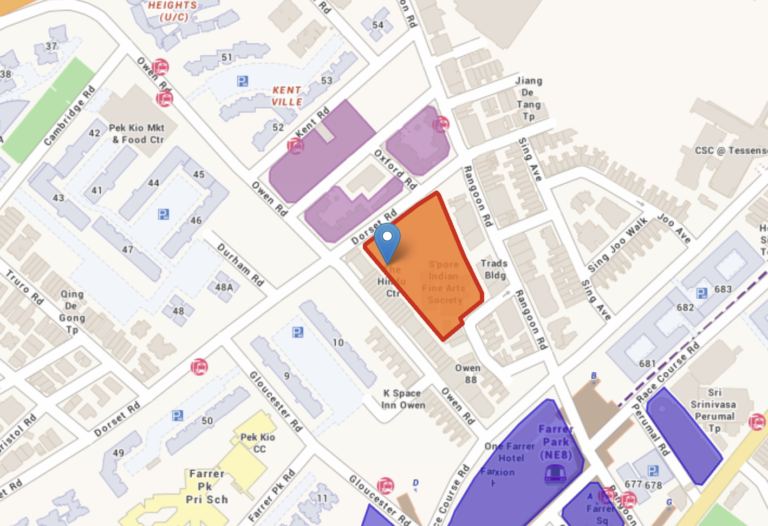Financing a condominium purchase in Singapore can be a complex process, but with careful planning and strategic decisions, you can navigate it smoothly. Here are some comprehensive tips to help you effectively manage the condo financing process.

Saving for the Downpayment
Automate Savings
Set up a dedicated savings account and automate transfers on payday. This ensures consistent savings without the temptation to spend the money elsewhere.
Reduce Expenses
Temporarily cut back on non-essential expenses like dining out, subscriptions, and impulse purchases. Redirect these funds to your downpayment savings.
Increase Income
Explore side hustles, career advancements, or leveraging existing skills to boost your income. Additional income sources can significantly speed up your savings process.
CPF Top-Ups
Make voluntary top-ups to your CPF Ordinary Account (OA) to maximize your CPF savings available for the condo downpayment.
- Minimum Cash Requirement: For private property purchases, including condos, you must pay at least 5% of the property’s purchase price in cash.
- CPF OA Usage: The remaining 20% of the downpayment can be covered using your CPF OA savings, provided you have sufficient funds in your account.
Government Grants
Research relevant government grants and subsidies for first-time condo buyers. These can provide financial assistance and ease the downpayment burden.
Understanding Loan Requirements
Loan-to-Value (LTV) Ratio
The maximum LTV ratio for bank loans in Singapore is 75%, meaning you can borrow up to 75% of the property value. The remaining 25% must be paid as a downpayment, with at least 5% in cash and the rest using CPF or cash.
Example of Buy Condo Loan-to-Value (LTV) Ratio
The Loan-to-Value (LTV) ratio is a critical factor in determining the maximum loan amount you can borrow when purchasing a condominium in Singapore. Here’s a detailed example to illustrate how the LTV ratio works:
Scenario
- Property Purchase Price: S$1,200,000
- Official Valuation Price: S$1,000,000
- Maximum LTV Ratio for First Property: 75%
Calculation
- Determine the Lower Value: The LTV ratio is based on the lower of the purchase price or the official valuation price. In this case, the lower value is the official valuation price of S$1,000,000.
- Calculate the Maximum Loan Amount:
- Maximum Loan Amount = LTV Ratio × Lower Value
- Maximum Loan Amount = 75% × S$1,000,000
- Maximum Loan Amount = S$750,000
- Downpayment Calculation:
- Total Downpayment Required = Purchase Price – Maximum Loan Amount
- Total Downpayment Required = S$1,200,000 – S$750,000
- Total Downpayment Required = S$450,000
- Cash and CPF Breakdown:
- Minimum Cash Downpayment (5% of Purchase Price) = 5% × S$1,200,000 = S$60,000
- Remaining Downpayment (can be paid using CPF or cash) = S$450,000 – S$60,000 = S$390,000
Summary
- Maximum Loan Amount: S$750,000
- Total Downpayment: S$450,000
- Minimum Cash Downpayment: S$60,000
- Remaining Downpayment (Cash/CPF): S$390,000
Total Debt Servicing Ratio (TDSR)
Ensure your total monthly debt obligations do not exceed 55% of your gross monthly income. This includes all loans, such as property, car, and personal loans.
Here’s an example to illustrate how TDSR is calculated:
Scenario
- Gross Monthly Income: S$8,000
- Monthly Mortgage Payment: S$2,500
- Monthly Car Loan Payment: S$600
- Monthly Personal Loan Payment: S$500
- Monthly Credit Card Payment: S$300
Calculation Steps
- Sum of Monthly Debt Obligations:
- Mortgage: S$2,500
- Car Loan: S$600
- Personal Loan: S$500
- Credit Card: S$300
- Total Monthly Debt Obligations: S$2,500 + S$600 + S$500 + S$300 = S$3,900
- Calculate TDSR:
- TDSR Formula: TDSR=(Total Monthly Debt ObligationsGross Monthly Income)×100TDSR=(Gross Monthly IncomeTotal Monthly Debt Obligations)×100
- Using the values: TDSR=(3,9008,000)×100=48.75%TDSR=(8,0003,900)×100=48.75%
Result
- TDSR: 48.75%
Since the TDSR of 48.75% is below the maximum allowable limit of 55%, the borrower would be within the acceptable range for taking on new debt, such as a home loan.
Key Points
- Gross Monthly Income: This is the total income before any deductions such as taxes or CPF contributions.
- Monthly Debt Obligations: Includes all monthly payments for loans and credit card debts.
- TDSR Cap: The Monetary Authority of Singapore (MAS) sets the TDSR cap at 55% to ensure borrowers do not over-leverage themselves.
Choosing the Right Loan
Interest Rates
Compare interest rates from different banks to secure the most favorable deal. Higher interest rates translate to higher monthly payments and a greater total cost over the loan tenure.
Fixed vs. Floating Rates
Decide between fixed and floating interest rates based on your financial stability and market conditions. Fixed rates offer stability, while floating rates can fluctuate with market changes.
| Criteria | Fixed Rate | Floating Rate |
|---|---|---|
| Interest Rate | Unchanged during lock-in period | Varies with market conditions |
| Stability | High (predictable payments) | Low (payments fluctuate) |
| Risk | Low (protected from rate hikes) | High (exposed to rate increases) |
| Prepayment Penalty | Often present | Typically absent |
| Suitability | Those valuing stability | Those seeking potential savings |
Current Market Conditions
- Current Rates: Floating rates in 2024 are generally higher than fixed rates, hovering above 4%. However, anticipated rate cuts by the Federal Reserve later in the year could make floating rates more attractive as they adjust downward.
- Trend: With expectations of declining interest rates, floating rate loans could offer significant savings over time if rates fall as predicted.
Additional Costs and Fees
Stamp Duty
Be prepared to pay Buyer’s Stamp Duty (BSD) and Additional Buyer’s Stamp Duty (ABSD) if applicable. These duties are based on the property’s purchase price and your residency status.
Legal and Valuation Fees
Factor in additional costs such as legal fees for conveyancing and valuation fees required by the bank.
Maintenance Fees
Review the condo’s monthly maintenance fees and understand what they cover, as these will be ongoing expenses.
Long-term Financial Planning
Affordability
Ensure that the monthly mortgage repayments remain comfortable within your projected budget, even with potential expenses like property taxes and maintenance fees.
Emergency Fund
Maintain a contingency fund to cover unforeseen repairs or financial emergencies.
Resale Value
Consider the potential resale value of the condo, which can be influenced by factors like location, amenities, and overall market conditions.
Professional Assistance
Mortgage Brokers
Work with a mortgage broker who has experience with condo financing. They can help you find the best loan options and navigate the application process.
Property Management
Research the property management company responsible for the condo to ensure they maintain the property well. This can affect your living experience and property value.
Tips to Improve Your Total Debt Servicing Ratio (TDSR)
Reduce Existing Debt Obligations
- Pay Off High-Interest Debts: Focus on clearing high-interest debts such as credit card balances and personal loans first.
- Consolidate Loans: Consider consolidating multiple loans into a single loan with a lower interest rate.
Increase Your Income
- Seek Additional Income Sources: Look for part-time jobs, freelancing opportunities, or monetize a hobby.
- Include Additional Income: Ensure that all forms of income, such as rental income, bonuses, and allowances, are included in your TDSR calculations.
Adjust Loan Terms
- Negotiate Loan Tenure: Extending the tenure of your loans can lower monthly repayments, improving your TDSR.
- Increase Downpayment: By increasing your initial downpayment, you reduce the principal amount of the loan, directly lowering your monthly repayments.
Avoid Unnecessary New Debt
- Limit New Debt: Avoid taking on new debt before applying for a condo loan as it increases your monthly obligations.
Debt Reduction Plans
- Agree to a Debt Reduction Plan: If refinancing, consider agreeing to a structured debt reduction plan with your lender.
Enhance Creditworthiness
- Improve Your Credit Score: Maintain a strong credit score by making timely payments and keeping credit card balances low.
Plan for Emergencies
- Maintain an Emergency Fund: Keep an emergency fund to cover unexpected expenses, preventing reliance on credit during financial challenges.
upcoming Condos
Hurry—prime units vanish fast! Secure your showflat appointment now!
Conclusion
Financing a condo in Singapore requires careful planning and understanding of various financial aspects. By following these tips and strategies, you can enhance your financial profile, improve your TDSR, and navigate the condo financing process more confidently. This preparation will help you achieve your goal of condo ownership while ensuring long-term financial stability.







